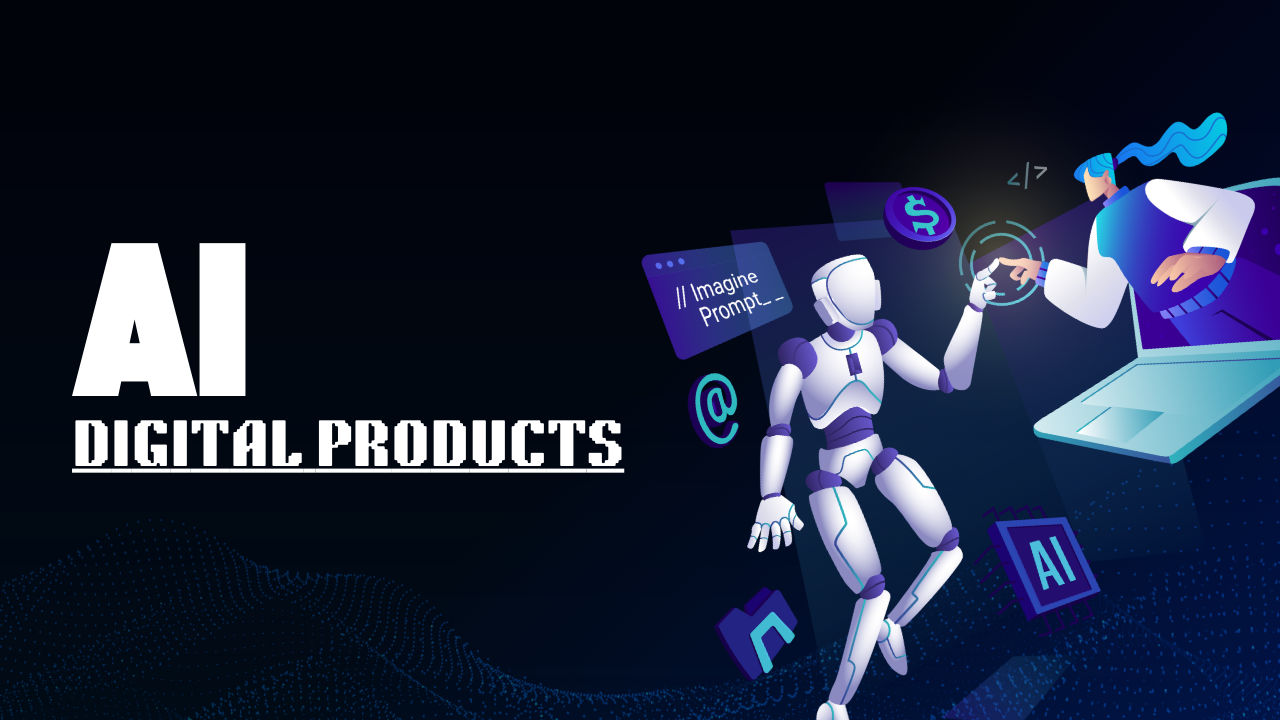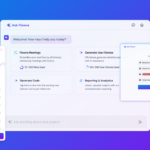
How to Use AI to Create Digital Products?
- September 04, 2024
- by
- tehreem
In today’s fast-paced world, creating innovative digital products has never been more exciting—or more challenging. If you’re looking to stand out in the crowded digital marketplace, harnessing the power of artificial intelligence (AI) can be a game-changer. AI not only streamlines the development process but also opens up new possibilities for creativity and efficiency. But how exactly can you use AI to create compelling digital products? In this guide, we’ll explore practical steps and insights to help you leverage AI technology effectively.
Introduction to AI in Digital Product Creation
Have you ever wished you could accelerate your product development process or offer a more personalized user experience? AI has made this wish a reality for many businesses. Artificial intelligence is transforming how digital products are created and refined, making it possible to innovate at an unprecedented pace. Whether you’re building an app, designing a software tool, or developing an online platform, AI can help you streamline development, enhance user experience, and achieve better outcomes.
Key AI Technologies for Digital Products
AI encompasses a range of technologies that can be applied to digital product creation. Understanding these technologies will help you select the right tools for your project.
- Machine Learning: Machine learning algorithms can analyze vast amounts of data to identify patterns and make predictions. This is particularly useful for creating predictive analytics tools and personalizing user experiences. For instance, companies like Netflix use machine learning to recommend content based on user preferences.
- Natural Language Processing (NLP): NLP allows machines to understand and generate human language. It powers chatbots, virtual assistants, and content creation tools. For example, OpenAI’s GPT-4 can generate human-like text, making it invaluable for automated content generation.
- Computer Vision: This technology enables machines to interpret and make decisions based on visual data. It’s used in applications such as image recognition and augmented reality (AR). Digital products that rely on image processing or AR can benefit greatly from computer vision.
- Generative Adversarial Networks (GANs): GANs are used to create new, synthetic data that mimics real-world data. They’re often used in design and media to generate realistic images and videos.
Identifying Opportunities for AI in Digital Products
AI offers numerous opportunities to enhance digital products. Here are a few areas where AI can make a significant impact:
- AI for Content Generation: Automate the creation of articles, marketing copy, or even creative content. Tools like GPT-4 can help generate high-quality text quickly, reducing the time spent on manual writing tasks.
- AI for User Experience Personalization: Use AI to tailor content, recommendations, and interfaces based on user behavior. This personalization can increase user engagement and satisfaction. For example, personalized product recommendations on e-commerce sites are powered by AI algorithms.
- AI for Data Analysis and Insights: AI can analyze large datasets to uncover insights that drive better business decisions. Predictive analytics can forecast trends and behaviors, helping you make informed decisions about product features and marketing strategies.
- AI for Automation and Efficiency: Automate repetitive tasks and streamline workflows. AI can handle tasks such as data entry, customer support, and even software testing, freeing up human resources for more strategic work.
Examples of AI-Driven Digital Products
Several digital products showcase the power of AI:
- AI-Powered Chatbots and Virtual Assistants: These tools provide 24/7 customer support and can handle a wide range of queries, improving customer service and reducing operational costs.
- AI-Based Design Tools: Tools like Adobe Sensei use AI to assist with graphic design, photo editing, and video production, making it easier to create high-quality visual content.
- Predictive Analytics Platforms: Platforms that use AI to analyze data and predict future trends. For example, IBM Watson offers solutions that help businesses understand customer behavior and market trends.
- Automated Content Creation Tools: AI tools that generate content for blogs, social media, and other platforms. These tools can produce high-quality, relevant content quickly, which is crucial for maintaining an active online presence.
Benefits and Challenges of Using AI in Product Development
Benefits:
- Increased Efficiency: AI can handle repetitive tasks quickly and accurately, reducing development time and costs.
- Innovation: AI opens new avenues for creativity and innovation, allowing you to build cutting-edge products that stand out in the market.
- Personalization: AI enables you to offer tailored experiences and recommendations, enhancing user satisfaction and engagement.
Challenges:
- Data Privacy Concerns: Handling user data responsibly is crucial, as AI relies on large datasets that may include sensitive information.
- High Initial Costs: Implementing AI technologies can be expensive, especially for small businesses or startups.
- Need for Specialized Skills: Developing and managing AI systems often requires specialized knowledge and expertise, which can be a barrier for some organizations.
Practical Steps to Implement AI in Digital Product Development
1. Setting Clear Objectives for AI Integration
Before diving into AI development, define your goals. What specific problems are you trying to solve with AI? Whether it’s enhancing user experience or automating processes, having clear objectives will guide your AI strategy and ensure you achieve the desired outcomes.
2. Choosing the Right AI Tools and Platforms
Select AI tools and platforms that align with your project’s needs. Popular options include TensorFlow for machine learning, GPT-4 for natural language processing, and various computer vision APIs. Evaluate these tools based on their features, ease of use, and cost.
3. Developing and Training AI Models
Collect and prepare data for training your AI models. The quality of your data directly impacts the performance of your AI. Train your models using appropriate algorithms and techniques, and continuously refine them based on performance feedback.
4. Integrating AI into Your Digital Product
Incorporate AI features into your product through APIs or by building them directly into your application. Ensure that the integration is seamless and enhances the overall user experience. Test thoroughly to identify and resolve any issues before launch.
5. Monitoring and Improving AI-Driven Products
Once your AI-powered product is live, monitor its performance and gather user feedback. Use this information to make iterative improvements and update your AI models as needed. Regular updates and maintenance are crucial for keeping your product effective and relevant.
FAQs
What are the most common AI tools for digital product creation?
Popular AI tools for digital product creation include TensorFlow for machine learning, OpenAI’s GPT-4 for natural language processing, and various computer vision platforms for image and video analysis.
How can AI enhance user experience in digital products?
AI enhances user experience by personalizing content and recommendations, improving interaction through chatbots and virtual assistants, and analyzing user behavior to tailor interfaces and features.
What are some challenges of integrating AI into digital products?
Challenges include managing data privacy concerns, dealing with high initial costs, and requiring specialized skills for developing and maintaining AI systems.
Using AI to create digital products offers immense potential for innovation and efficiency. By understanding key AI technologies and integrating them effectively, you can enhance your products and meet the evolving needs of your users. Embrace the power of AI to streamline development, personalize experiences, and stay ahead in the digital landscape. Remember, successful AI implementation starts with clear objectives and the right tools—so take the leap and transform your digital product vision into reality.






